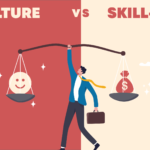Every recruiter has experienced it — the new employee who looked ideal on paper but proved to be a misfit. In an age where speed tends to win over strategy, the price of a poor hire can quietly escalate into a significant business loss.
In 2025, with reduced staff and compressed growth cycles, a single poor hiring decision can sabotage performance way beyond the role. Here’s what it really costs — and how to steer clear.
Financial Losses Add Up Quickly
The most obvious effect is money — and plenty of it. The wrong hire can run 30–50% of the job’s yearly salary when you include the cost of hiring, training, onboarding, and severance.
Multiply that by the cost of replacing them — job postings, recruiter fees, background checks — and the cost doubles. And this doesn’t even take into consideration the lost income from subpar performance or lost opportunities while they work there.
Time Wasted is Momentum Lost
Hiring is work — drafting JDs, finding candidates, filtering, interviewing, bringing on board. When that time is spent on someone who quits (or underperforms) in 2–3 months, it’s not only frustrating — it’s disruptively operational.
Your team invests time in managing vacancies, coaching underperformers, and cleaning up the preventable blunders. That’s time not invested in building your business or producing high-quality work.
Team Morale & Culture Take a Hit
Bad hires don’t work in isolation — they impact everyone around them. Perhaps it’s the colleague who never works together, the recruit who resists coaching, or someone who simply doesn’t get your culture.
When other team members cover for them or lose confidence in your hiring, it causes frustration and disengagement. If left unchecked, that can even cause good people to leave.
Brand Reputation is on the Line
One bad hire in a client-facing or leadership-position can hurt your company’s reputation — quickly. Whether it is lack of communication, failed deadlines, or tension within the ranks seeping outside, the cost to the brand is difficult to quantify but quite real.
Even within, if your hiring standards seem inconsistent, applicants will begin to question your culture — particularly in sectors where word-of-mouth is key.
How to Avoid Bad Hires in 2025
Preventing hiring blunders isn’t about moving slower — it’s about moving smarter. At Fomogo, we assist organizations in avoiding costly hiring errors through the combination of AI screening and human expertise to develop pre-vetted shortlists that concentrate on:
- Skill readiness
- Cultural alignment
- Soft-skill assessment
This multi-level vetting ensures that you’re not merely employing quick but employing correct.
Final Thoughts
The price of a bad hire is not just a line item on your budget — it’s a stealthy drain on your team, your time, and your reputation. In 2025, intelligent hiring equals fewer regrets, more powerful teams, and accelerated growth.
Let Fomogo guide you to get it right — from initial interview to last offer.




